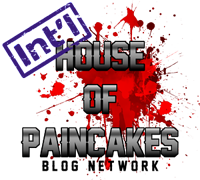I ended introducing skills to my C&C Games mainly because players wanted them, I love the C&C system as a whole but the general concensu was folks wanted a little more "definition" to their characters. After pinching skill systems that didn't really "fit" (a mixture of AD&D 1st and 3.5 Editions) I came up with a new approach.
Here's how I've being doing it - its been working quite well for the last couple of Months.
This is a way for the use of skills in C&C games to 'fit' a little better with the Siege Engine System - so it’s possible to actually still use both approaches - allowing characters to attempt pretty much anything whilst maintaining a more structured approach - with appropriate Challenge Ratings of course.
This would still allow a Fighter to attempt to pick a lock (for example) - he just wouldn't have much of a chance of succeeding (IMHO as it should be).
I personally believe that rather than have a long static list of skills, the players should choose skills that fit their character concept and with the help of their CK – and come up with their own list of skills and their descriptions.
Skills would still have ranks of sorts – and these levels are ‘rated’ like any characters attributes –
• Tertiary (the lowest skill level)
• Secondary (average skill level
• Primary (the highest skill level)
Like class skills, the character applies any appropriate attribute bonus to the task at hand - strength when shoeing a horse, or dexterity when making a horse-shoe – both would be considered to come under the skill heading of blacksmithing, but you would require strength for one and manual dexterity for the other. But unlike class skills, you don't add your class level in a 'straight' manner.
• Primary skills get a +1 bonus per level
• Secondary gets +1/2 levels
• Tertiary gets a +1 bonus per 3 levels
Your base challenge rating is determined by skill 'level' – level 3/Primary = 12, level 2/Secondary = 15, and level 1/Tertiary = 18. This in turn has a Challenge Rating applied by the Myth Master determined by the individual circumstances for that particular use of the skill.
As rule of thumb - the Number of slots a Character has for his Secondary Skills are equal to –
Characters (INT+WIS) + Characters Starting Age/10 (round up).
Skill Level / Cost to "buy" at First Level
Tertiary (18 ) / 2 point
Secondary (15) / 4 points
Primary (12) / 6 points
Skill Level / Cost to "buy" after First Level
Tertiary (18 ) / 3 point
Secondary (15) / 6 points
Primary (12) / 9 points
Example - Brother Kydric has 26 ‘Slots’ to spend on his Secondary Skills – and he decides to spend 6 Slots on Healing. Giving him the Healing secondary skill at Level 3/Primary, his base challenge difficulty for all tests involving his Healing secondary skill is set at 12.
I set the costs for buying new skills as higher after the character has begun his "career" to make it more difficult later on in a characters development - mainly to stop PC's being "bogged down" with huge lists of skills.
A Character gains Secondary Skill points at every ‘Odd’ level (3rd, 5th, 7th and so on), the points he gains are equal to his Class Prime attribute modifier (whichever is higher) +1 (with a minimum "gain" of 1 Secondary Skill point).
To make the check, the character performing the skill simply rolls a d20 and adds his appropriate modifiers - the difficulty is set by his skill level (either 12, 15, or 18) plus any challenge rating added by his CK.
So if a character is level three, has a dexterity of 15 (the appropriate attribute in this example), and his skill level is 3/Primary – when using the Weapon Smith secondary skill they are allowed a +4 to their roll.
In some instances the use of skills causes another to make a saving throw. In this case, the character, monster or non-player character makes a saving throw but modifies the roll by a -1 for each level of skill the character has (-1 for Tertiary, -2 for Secondary, and -3 for Primary).
This is also adjusted further for any attribute modifiers. When a saving throw is called for, the character’s level or monsters hit dice also affect the roll.
Furthermore, as mentioned above - there are always circumstances than need some modification beyond that mentioned above.
Unusual circumstances, the weather and pure chance can come into play to effect the chances of success. In addition, the difficulty of the situation also adjusts the roll.
Its fairly straight forward, fits in with the concept of primes - and doesn't screw up the SEIGE Engine system.
Subscribe to:
Post Comments (Atom)



No comments:
Post a Comment